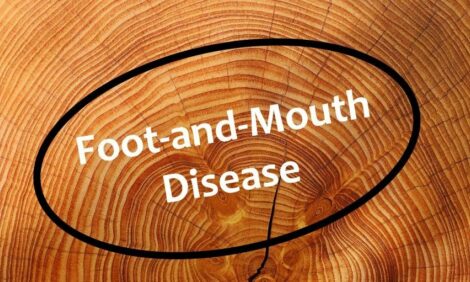



Foot and Mouth Gathers Momentum in Russia and India
ANALYSIS - Official reports show there is no let-up from the spread of foot and mouth disease (FMD) in Russia as the death toll continues to mount.The World Organisation for Animal Health (OIE) has reported three new outbreaks in cattle since 22 September.
All cases have been in rural provinces close to the borders with China and Mongolia, including 110 cases in Priargrunsky earlier this week.
This adds to over 40 cases detected in Priargrunsky late last month and a total of 84 reactors in the Krasnokamensky district.
Reports from the Indian press tell a similar story. Like Russia, cases have been reported in the thousands on some holdings but the situation is being reported close to urban centres.
According to the Times of India, FMD has killed two deer in a park in Bangalore Province while technicians attempting to vaccinate the remaining 85 animals are having difficulty in administering doses.
The disease is well established in Karnataka, the province of Bangalore and Tumkur with the most distressing signs being shown in non-indigenous cattle, reports the Business Standard.
There have been no OIE reports of the Indian outbreak to date. Veterinarians suspect this is due to underreporting by the Ministry.
Although of little reconciliation to affected cattle farmers having stock culled, the rate of disease advancement in both Russia and India could form case study examples for the disease control teams of the future.
Real life examples of outbreaks and government response strategies are ways in which the world’s disease specialists are trained to quell the next epidemic.
Dr Eoin Ryan, Animal Health Officer for the World Food and Agriculture Organisation is involved in assessing and training professionals to respond to all seven serotypes of the virus globally.
His message is that the ‘extremely contagious’ nature of the virus means that rigorous biosecurity protocol is required once detected and that staff have to be primed to deal with the real thing.
He added: “The training courses are provided by the European Commission for the control of foot and mouth disease (EUFMD) and are held in countries where the disease is endemic. Courses have been held in Turkey, Kenya and Nepal.”
The courses offer 'real-time' hands-on teaching to farm environments as well as a rigorous assessment exam.
In summing up the main points of controlling FMD, Dr Ryan said: "Taking a diagnostic sample correctly and knowing what to look for in animals is key. Being able to integrate clinical findings, such as the age of a lesion with the epidemiological investigation is important too."
Attendees are frequently surgeons with a state role, either in central head quarters, laboratories and district officers, although the private sector is also represented.
Dr Ryan added that this is typically in the form of veterinary advisers from stakeholder organisations.
Originally set up in 1954, the EUFMD is one of the European Union’s oldest commissions and today works closely with the European Commission and the OIE to coordinate FMD control in Europe.
Michael Priestley
News Team - Editor
Mainly production and market stories on ruminants sector. Works closely with sustainability consultants at FAI Farms



